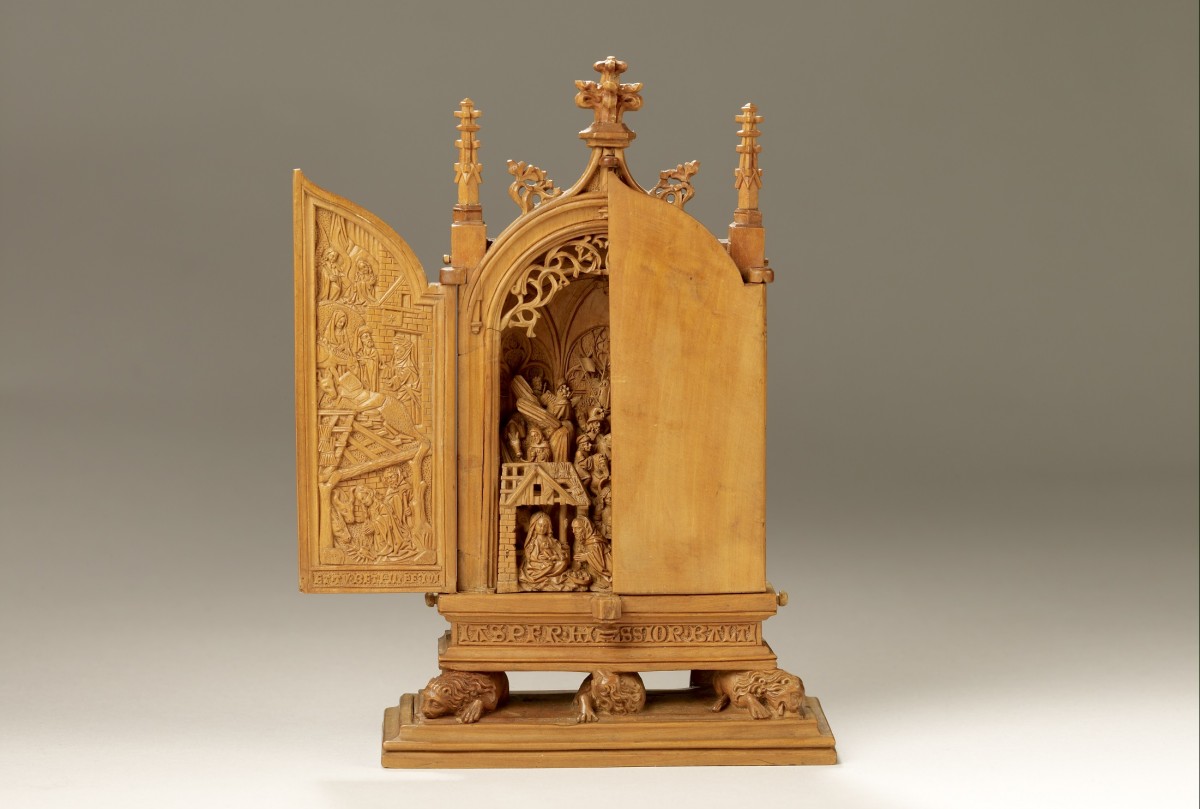Art Pick of the Week: Miniature Altarpiece: Adoration of the Magi
Every week we’re sharing one of our favourite artworks from the AGO Collection for you to see on your next visit.

The Seven Natural Wonders; child wonders who graduate from university; one-hit wonders – the world is full of them. But did you know we have our own collection of small wonders tucked away on Level 1? The AGO is home to the largest collection of boxwood miniature sculptures in the world, with ten intricately carved prayer beads and two miniature altarpieces. For this week’s Art Pick, we’re taking a closer look at one of these amazing wonders, Miniature Altarpiece: Adoration of the Magi, currently on view in the Thomson Collection of European Art (Gallery 108). Read on to learn some of the secrets hiding inside the small wonders.
Along with the other pieces in the boxwood miniature collection, this sculpture is carved from boxwood, which was a prized material during the medieval period due to its incredible density that gives it the durability to hold small engraved details without cracking or splintering. Some medieval writers recorded boxwood’s links to the Bible, making it even more desirable for sculptures featuring Christian themes.
This particular piece is a triptych, with two small doors that swing open and shut on small wooden hinges. When open, the centre of the triptych depicts the Adoration of the Magi, the classic Christian nativity scene. A number of pieces make up the ornate base, which cradles the central triptych. This central scene is carved mostly from one piece of wood, with one additional relief of a barn and an ox sliding in behind the Virgin Mary. There is also a pole beside the Virgin Mary, and several spears that have been inserted through drilled holes in the bottom of the piece.
Simply looking at this tiny wooden altarpiece sparks wonder, but the process of uncovering its secrets is just as awe-inspiring. In preparation for the 2016–17 AGO exhibition, Small Wonders: Gothic Boxwood Miniatures, a team of AGO curators and conservation scientists set out to find out exactly how these works, with their tiny miniature carvings, were made.
When traditional photography and X-ray technology proved too blurry, the team turned to CT scans and the results were incredible. After stitching together the images, the team used specialized virtual reality (VR) technology to create a series of videos that allow viewers to fly into the intricate details of each piece. Take a closer look at the CT scan of Miniature Altarpiece: Adoration of the Magi in the video below and see all the component pieces that make up this wonderful sculpture.
Looking at the footage it’s easy to forget that the central scene is only eight centimetres tall. That makes each carved figure less than one centimetre tall. In fact, they’re so small a professor of industrial woodworking from Humber College couldn’t recreate it with modern tools and technology!
The exhibition may be over, but you can still see Miniature Altarpiece: Adoration of the Magi alongside many other boxwood miniatures and VR videos on Level 1 in the Thomson Collection of European Art (Gallery 108).
Stay tuned for next week’s Art Pick.
Admission to the AGO Collection and all special exhibitions is always free for AGO Members, AGO Annual Pass holders and visitors 25 and under.
